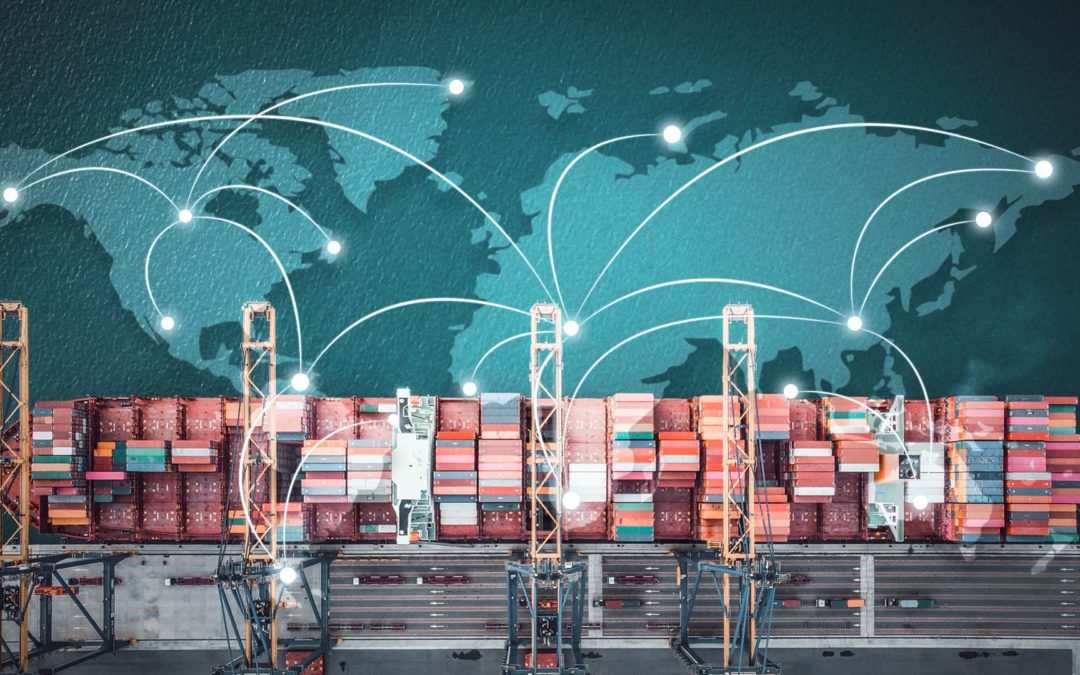This two-part blog series details the top supply chain visibility hurdles that shippers are facing right now and shows how a SaaS-based transportation management system provides the high levels of shipment visibility that companies need to overcome these challenges.
On track to reach $11.4 billion in revenues by 2027, up from $5.46 billion in 2019, the global transportation management systems (TMS) market is growing by leaps and bounds as companies replace their aging, on-premises TMS platforms with newer, software-as-a-service (SaaS)-based options. Add in the new organizations that are implementing TMS for the first time, and it’s clear that this software market’s 10% compound annual growth rate (CAGR) is likely to stay on track for some time.
In streamlining the transportation management process, TMS monitors, organizes, and handles any and all activities related to product transport—from the time an order is placed until the delivery reaches its final destination. A process that can’t be managed properly using spreadsheets and disparate technology systems that don’t “talk” to one another, transportation was among the first elements in the supply chain to digitize.
Demand for TMS has remained strong since then. “The popularity of the TMS platform is continuously growing,” says Allied Market Research, which estimates that about 35% of companies currently use TMS to manage their transportation networks. “TMS enables better transactional and communication systems,” the firm states, “to allow users to leverage real-time data, make easier decisions, and plan and strategize for optimal transportation solutions.”
More Companies Lean on TMS
In Logistics Management, Gartner’s Bart De Muynck says that the global pandemic and subsequent supply chain disruptions raised shippers’ awareness of their transportation networks. As such, it pushed more companies to invest in TMS in 2020.
“The TMS market was already growing, but when the pandemic emerged, logistics, transportation, and supply chain execution suddenly took on an even greater role in the overall supply chain,” says De Muynck. “It’s as if everyone woke up from a coma at once.” Up until that point, he contends that many shippers still looked at transportation like the “tail of the dog,” with much more emphasis being placed on supply chain planning and procurement.
That changed in 2020, when companies that were already using TMS found their operations better positioned to face the challenges that COVID-19 was throwing at them. The same companies were grappling with the impacts of carrier bankruptcies, capacity crunches, rising freight prices, and other obstacles that ebb and flow within the transportation industry—with or without a global pandemic in full force.
As transportation management gets more complex, Logistics Management says technology vendors are also integrating more advanced options into their platforms to help shippers wrap their arms around these complexities.
For example, more sensors are being used to track shipments, gather data, and then report on freight locations and conditions as goods move through the supply chain. Using real-time data, sensors can alert a carrier or shipper when a high-dollar shipment has shifted while in transit or when the temperature drops by a couple of degrees for perishable goods.
Current market volatility has heightened the need for effective transportation management, with driver shortages, port congestion, and persistent supply shortages as just a handful of the supply chain issues that companies are grappling with right now. Supply chains are also gaining in complexity as multiple trading partners spread across different regions work to orchestrate larger and larger ecosystems.
Allied Market Research says that SaaS currently reigns as the delivery method of choice for new TMS users. Because it allows multiple different trading partners, carriers, and other providers to “hook into” the platform and transact with one another, cloud-based TMS also provides extremely high levels of supply chain visibility. This, in turn, provides transparency into each link in the supply chain as freight moves are planned out, alerts generated, and real-time decisions are made.
Armed with this data, companies can not only enhance operational efficiencies and better meet customer demands, but they can also tap into their TMS’ analytics and use them to make more informed, forward-looking decisions. And because they have dynamic documentation of their end-to-end logistics operations, organizations can pivot accordingly and make incremental improvements over time—all from a single, digital platform.
.jpg)
IntelliTransTMS is the only SaaS-based TMS that provides shipment execution and visibility across rail, truck, intermodal, barge, and ocean shipments. Whether you ship hundreds or thousands of loads a month, lowering distribution costs helps improve your bottom line. IntelliTransTMS reduces labor-intensive, time-consuming, and error-prone business processes. From shipment visibility to invoice auditing and analytics, you have everything you need whenever and wherever you need it.
IntelliTrans’ Global Control Tower provides high levels of supply chain transparency; aggregates, completes, and enhances data from a variety of sources; offers visibility into and execution of different aspects of the supply chain; and generates data-driven alerts and analytics that ask deeper questions and deliver meaningful insights. By leveraging tracking information, the Global Control Tower provides analytics that measures key performance indicators (KPIs) like fleet cycle time, origin/destination dwell time, lane and hauler performance, back orders, freight spend, load optimization, and more. With their rate, equipment, lease, tracking, and invoice data in a central repository that’s accessible 24/7, companies can position themselves for success in any market conditions.

